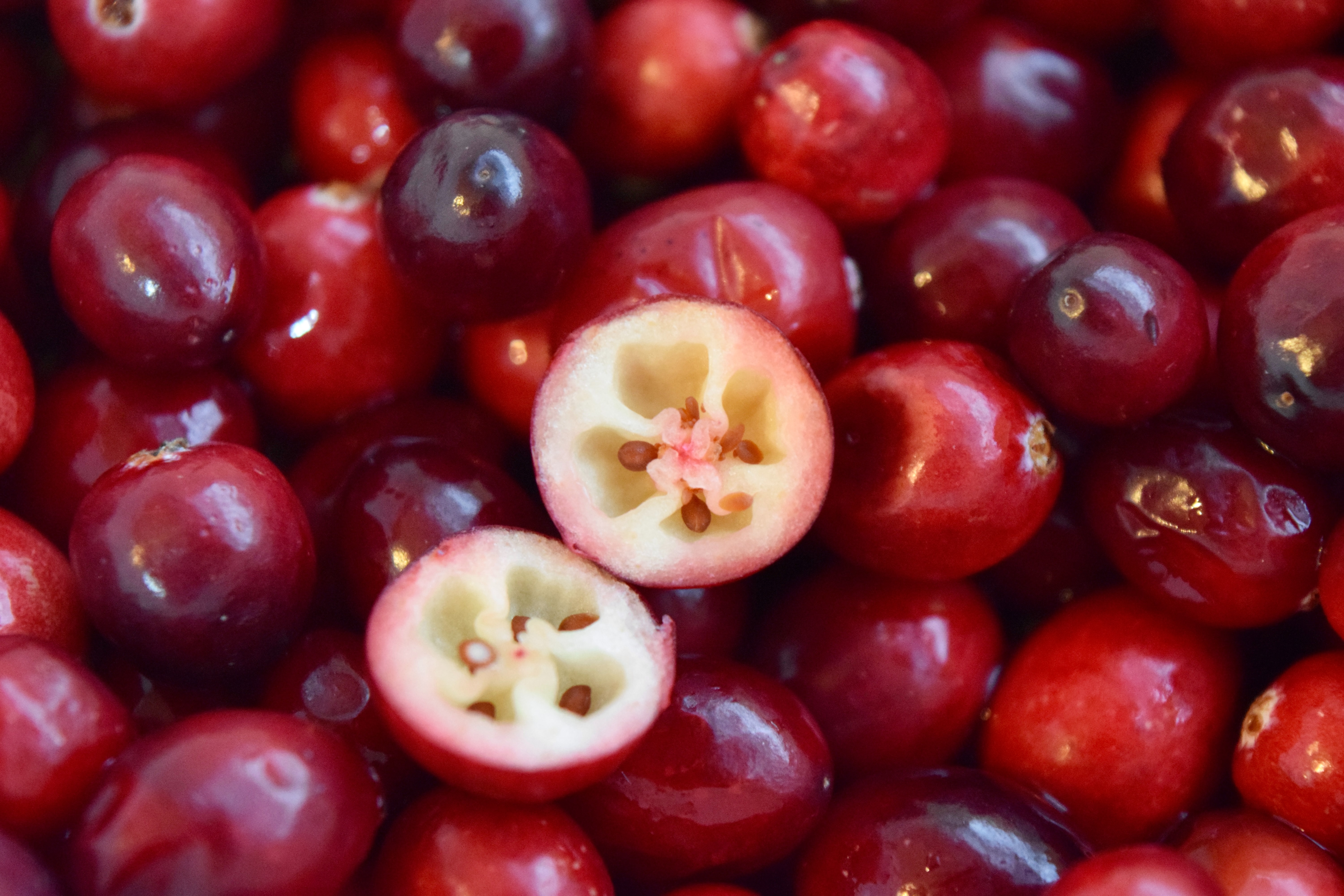Cranberries the Color of the Season
go.ncsu.edu/readext?901548
en Español / em Português
El inglés es el idioma de control de esta página. En la medida en que haya algún conflicto entre la traducción al inglés y la traducción, el inglés prevalece.
Al hacer clic en el enlace de traducción se activa un servicio de traducción gratuito para convertir la página al español. Al igual que con cualquier traducción por Internet, la conversión no es sensible al contexto y puede que no traduzca el texto en su significado original. NC State Extension no garantiza la exactitud del texto traducido. Por favor, tenga en cuenta que algunas aplicaciones y/o servicios pueden no funcionar como se espera cuando se traducen.
Português
Inglês é o idioma de controle desta página. Na medida que haja algum conflito entre o texto original em Inglês e a tradução, o Inglês prevalece.
Ao clicar no link de tradução, um serviço gratuito de tradução será ativado para converter a página para o Português. Como em qualquer tradução pela internet, a conversão não é sensivel ao contexto e pode não ocorrer a tradução para o significado orginal. O serviço de Extensão da Carolina do Norte (NC State Extension) não garante a exatidão do texto traduzido. Por favor, observe que algumas funções ou serviços podem não funcionar como esperado após a tradução.
English
English is the controlling language of this page. To the extent there is any conflict between the English text and the translation, English controls.
Clicking on the translation link activates a free translation service to convert the page to Spanish. As with any Internet translation, the conversion is not context-sensitive and may not translate the text to its original meaning. NC State Extension does not guarantee the accuracy of the translated text. Please note that some applications and/or services may not function as expected when translated.
Collapse ▲A couple of weeks ago I wrote about the colorful pomegranate being in season.
Cranberries are another red fruit that we find fresh only this time of year.
The majority of cranberries are harvested in September and October and we’ll see them fresh in markets into January. When buying berries select those that are red, ripe, plump, hard, and shiny. Before use, they should be sorted and washed.
Take out any bruised, shriveled, soft, spongy, or brown berries. White berries are safe to eat, they have just not developed their full color. They are usually sold in 12-ounce bags. This equals about three cups of whole berries or 2½ cups of chopped berries. Fresh berries will keep in the sealed bag in the refrigerator crisper for up to two months. Don’t wash until ready to use.
Since the fresh season is short, plan ahead and buy a couple of extra bags now to freeze for use throughout the next year. There are several ways you can freeze berries… it really depends upon how you want to use them down the road. Once frozen and thawed cranberries will have a soft texture and are best used for cooking and baking.

Like other frozen fruits, cranberries should be added to recipes still frozen to prevent the juices from flowing out of the fruit. Frozen berries keep their quality in the freezer for nine to twelve months.
In the bag— Instructions on the bag say to simply throw them in the freezer as
purchased. I like to place these bags into a large gallon-sized zip-top freezer bag to give them a little more protection in the freezer. These berries won’t be washed, so you’ll need to wash and sort the frozen berries just before use.
Wash first-— The National Center for Home Food Preservation encourages washing and sorting the berries before freezing. Use a salad spinner to spin off excess moisture that will otherwise cause the skins to toughen and the berries to stick
together in the container. It’s recommended to place the clean and dry berries on a tray so they will freeze individually and then pack them loosely into freezer containers or bags. When ready to use, still frozen cranberries can be measured whole or chopped in a blender or food processor.
Chopped— Most recipes use only a small amount of cranberries, so another way to freeze is ready-to-go for a recipe. Wash and chop with a food processor or knife, then individually bag in recipe-sized portions. If you have a recipe that you know you like to make, check the amount and put that in your containers.
Sweetened— Cranberries can also be frozen and covered with a 50% sugar syrup or with dry sugar. If you have a favorite recipe, measure the amount of berries and dry sugar needed and freeze them together. Berries frozen with syrup or sugar will have better texture and flavor when defrosted. Be sure to label these packages well, so you know the measurements of ingredients.
Cranberries are at the top of the list of healthy foods. Of all fruits, cranberries have one of the lowest amounts of natural sugar. One cup of fresh cranberries has only 4 grams of sugar. Compare this with raspberries, blackberries, and strawberries which have 5-7 grams of natural sugar per cup. For this reason, cranberries are often combined with other fruits and sugars to make them taste sweeter.
They have a high antioxidant value and provide vitamin C, dietary fiber, manganese, and phytonutrients. They are also fat-free, saturated fat-free, cholesterol-free, and sodium free. Eating cranberries can help protect against health problems like urinary tract infections, and chronic ailments like cancer and diseases of the heart.
Grab some cranberries while you can to add sparkle, flavor, and nutrition to your holiday foods and year-round.
Cheryle Syracuse wrote this article and more similar ones for the Family and Consumer Sciences Column in the Brunswick Beacon. Syracuse is an FCS team member and can be reached at N.C. Cooperative Extension, Brunswick County Center, 910.253.2610 or by email at cheryle_syracuse@ncsu.edu.



